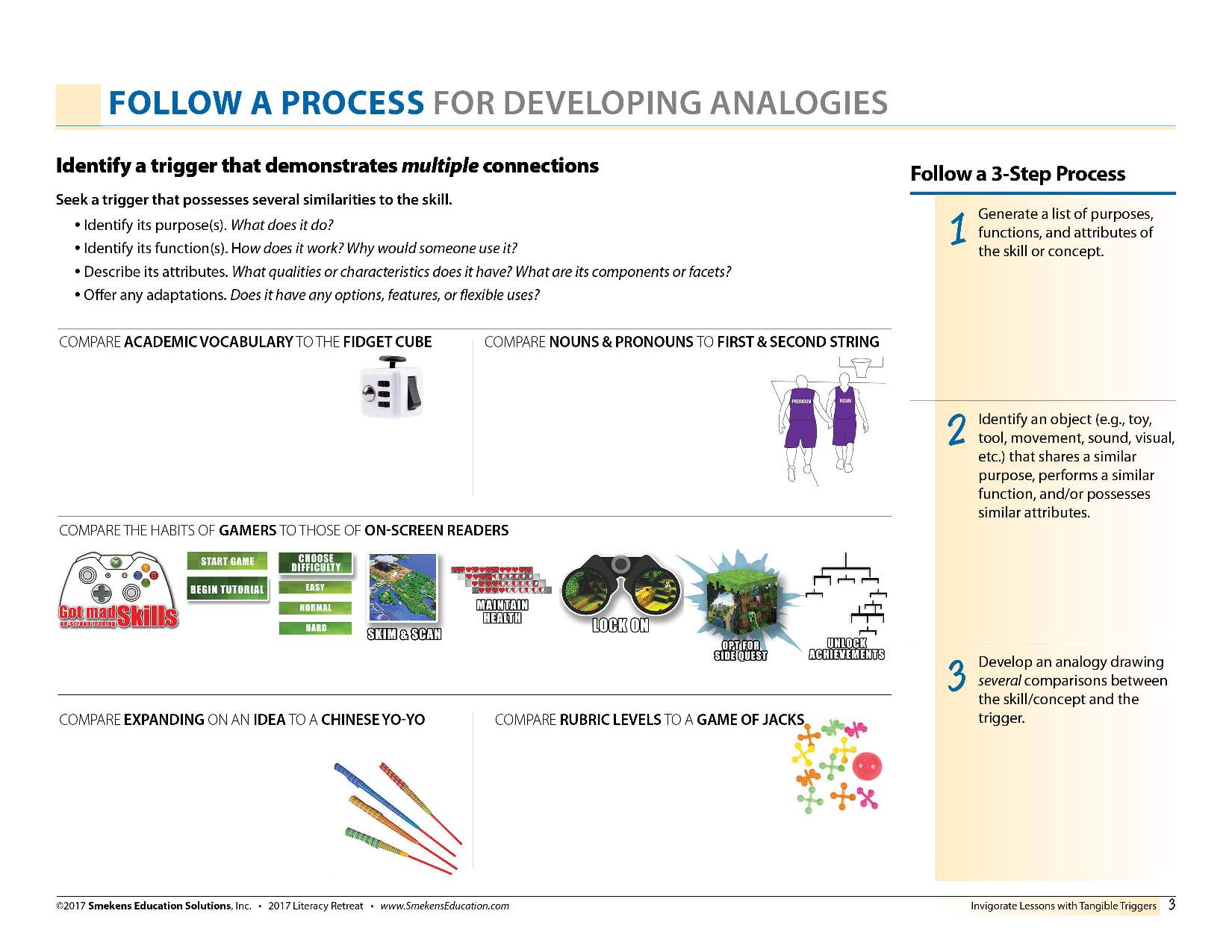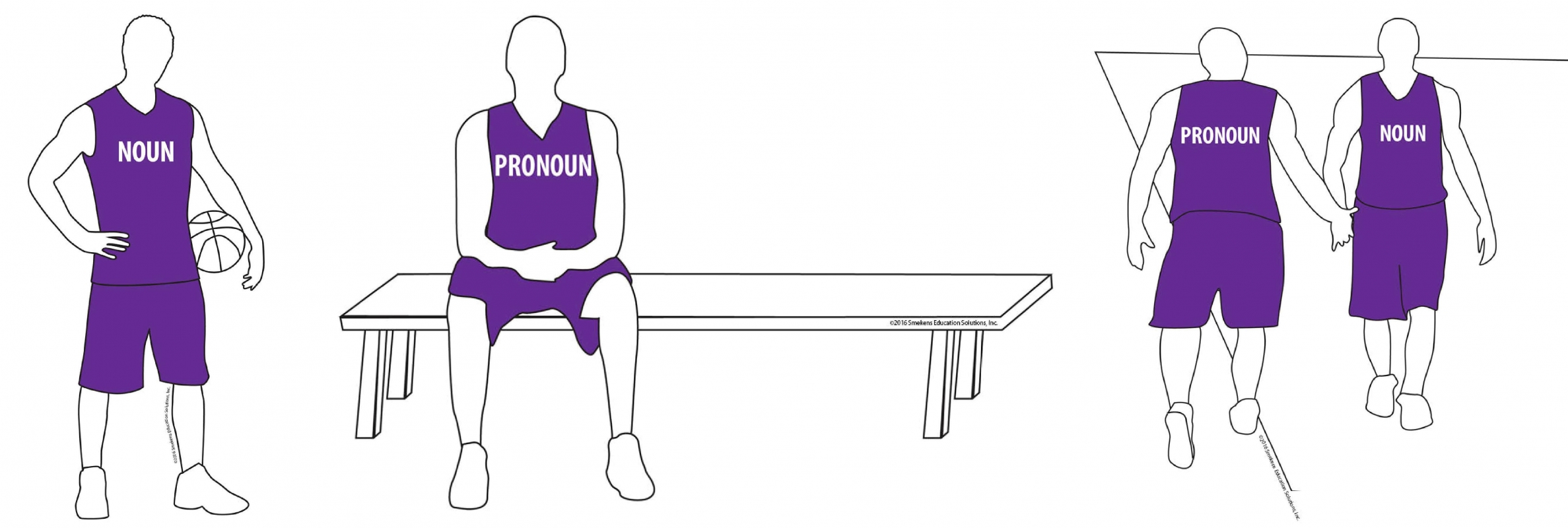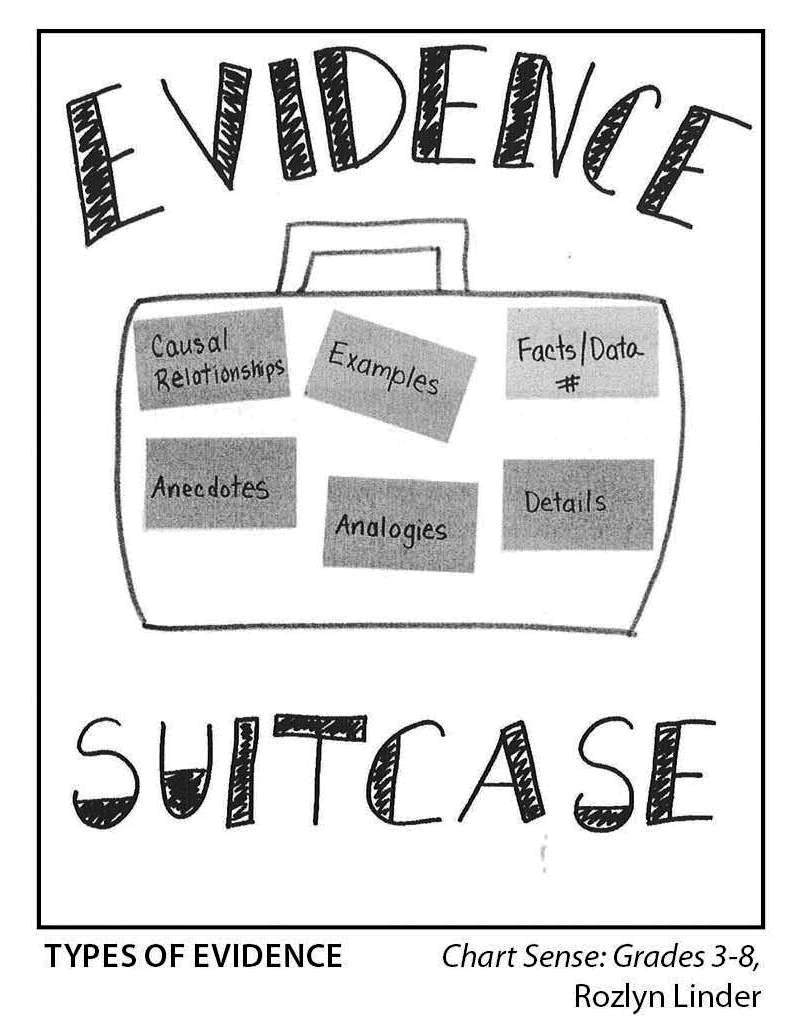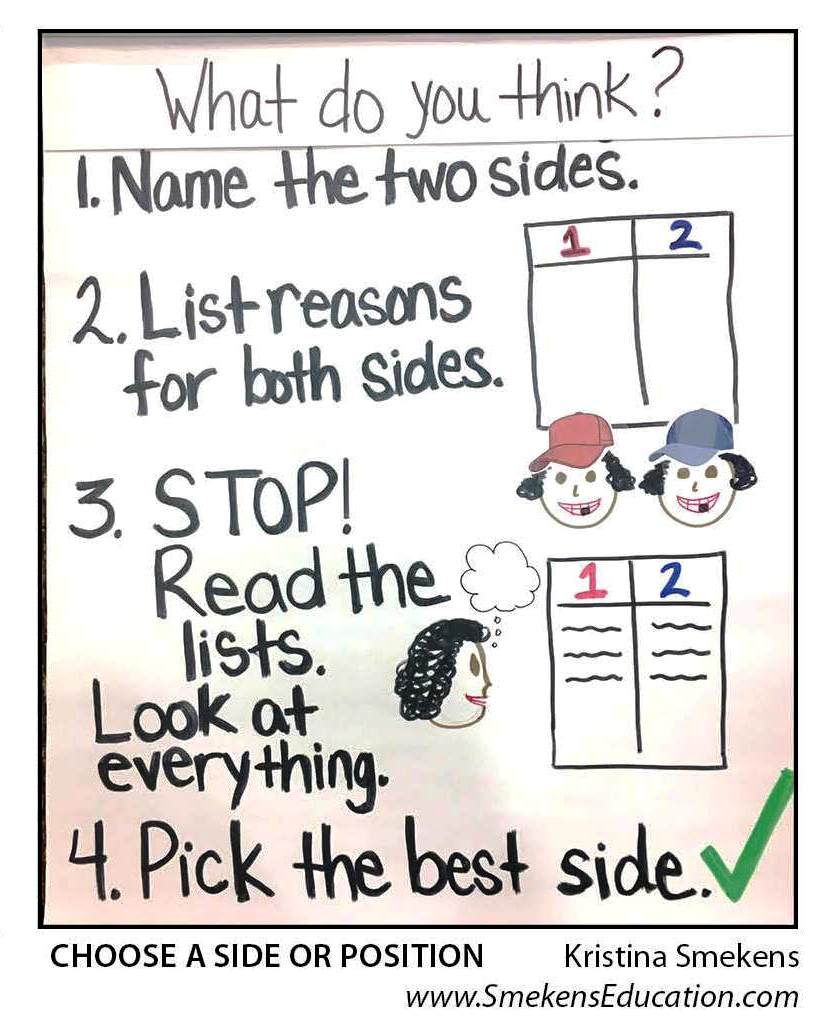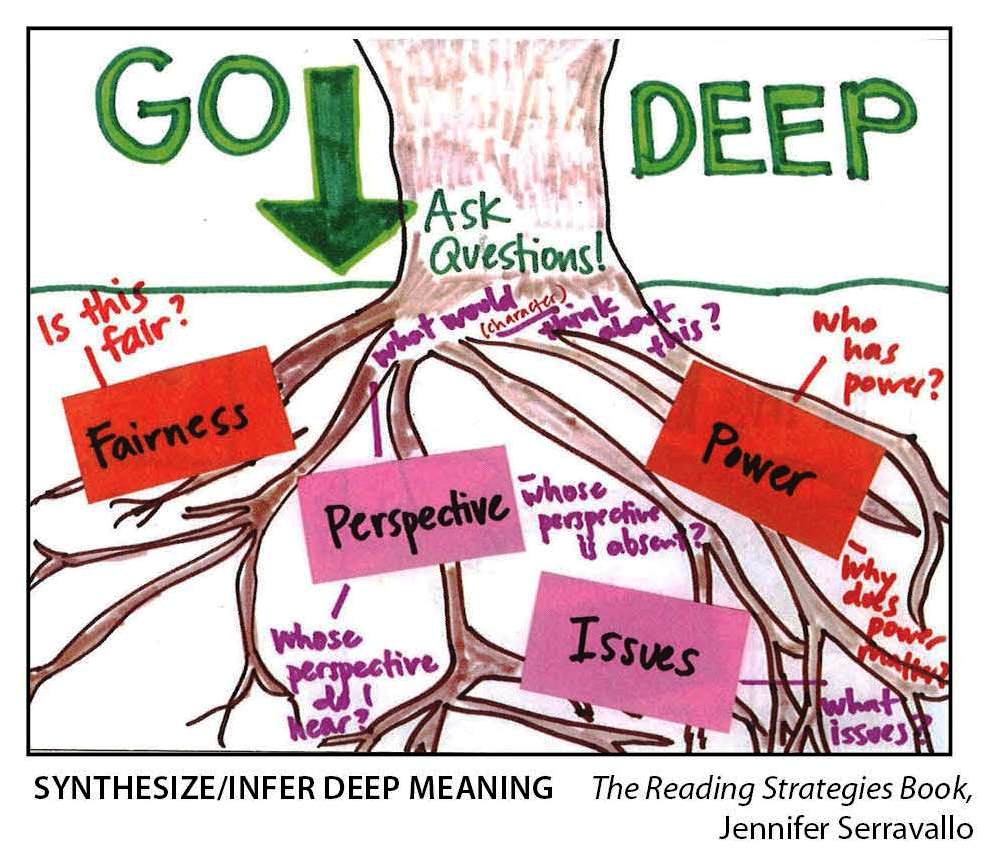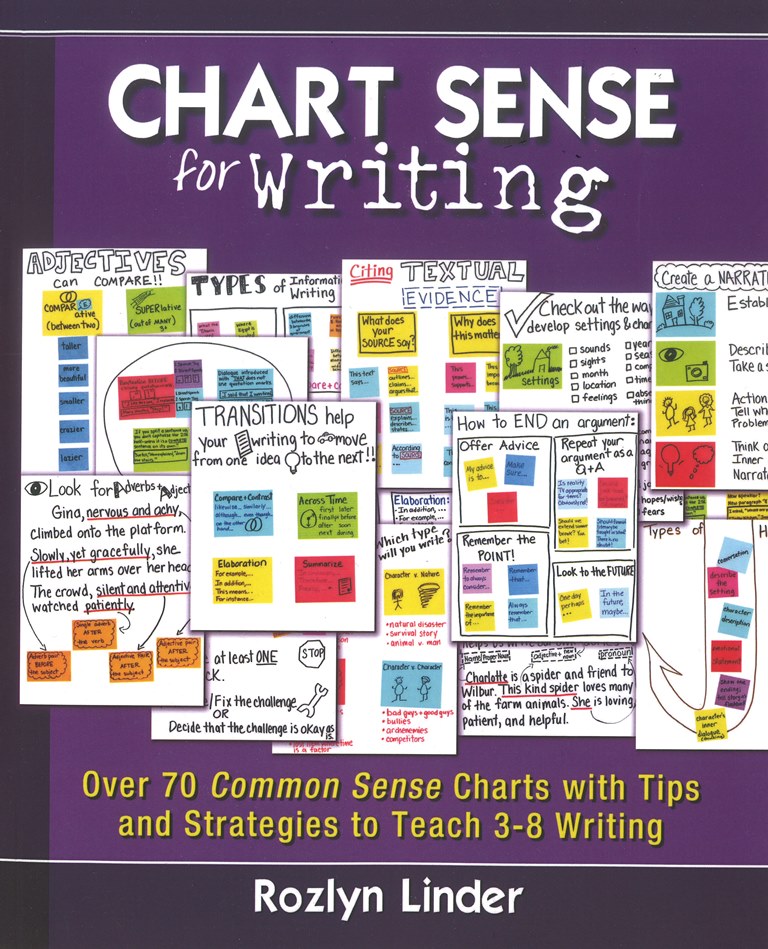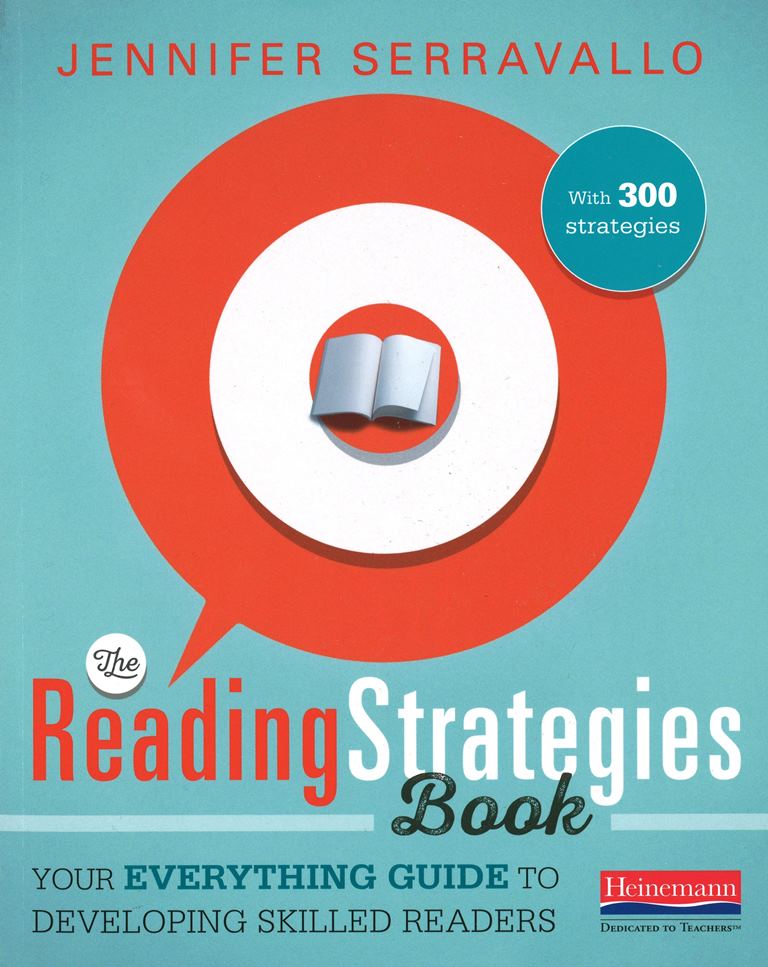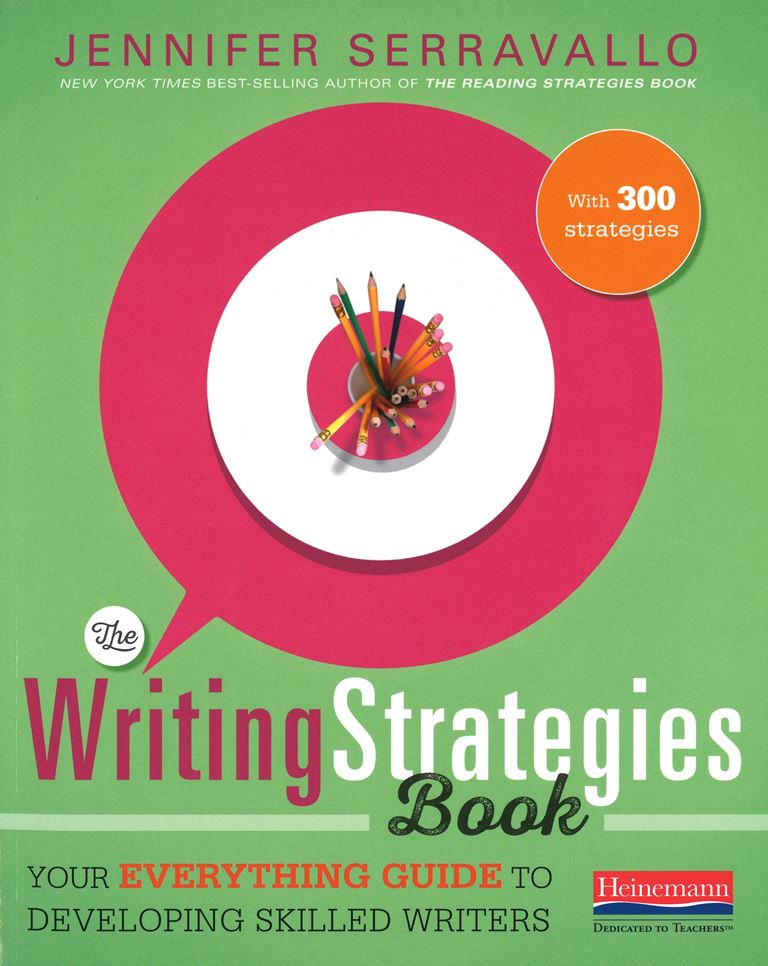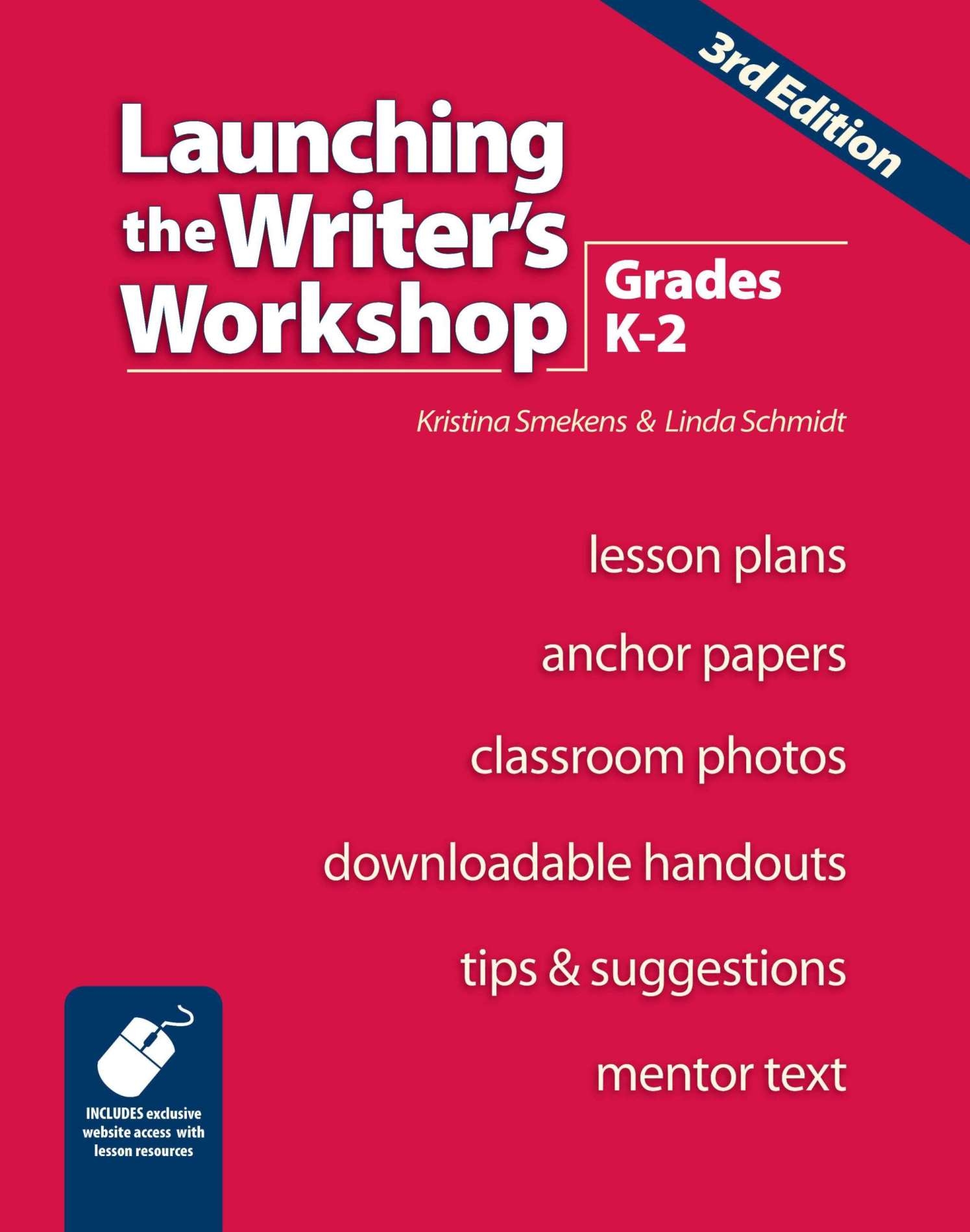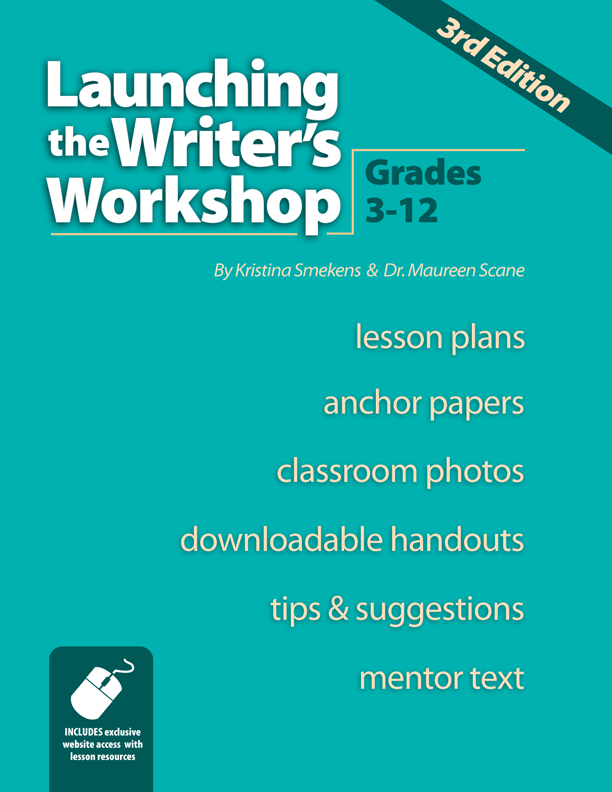Literacy Retreat 2017
SECRET SITE
Invigorate Lessons with Tangible Triggers
Connect to the concrete & familiar
Types of triggers…

Consider toys or items within the students’ lives that would be relevant. Think about everyday tools or utensils, too.

Consider what visual would best show the object or idea using a photograph, clipart image, diagram, illustration, skill, or graphic.

Consider describing a scene, situation, scenario, story, anecdote that demonstrates the purpose and point.

Consider a body motion, position change, physical action, or gesture. It may also be a combination of multiple movements.

Consider creating the actual sound (if it makes one), creating a sound to represent an idea, or connecting it to an onomatopoeia word.
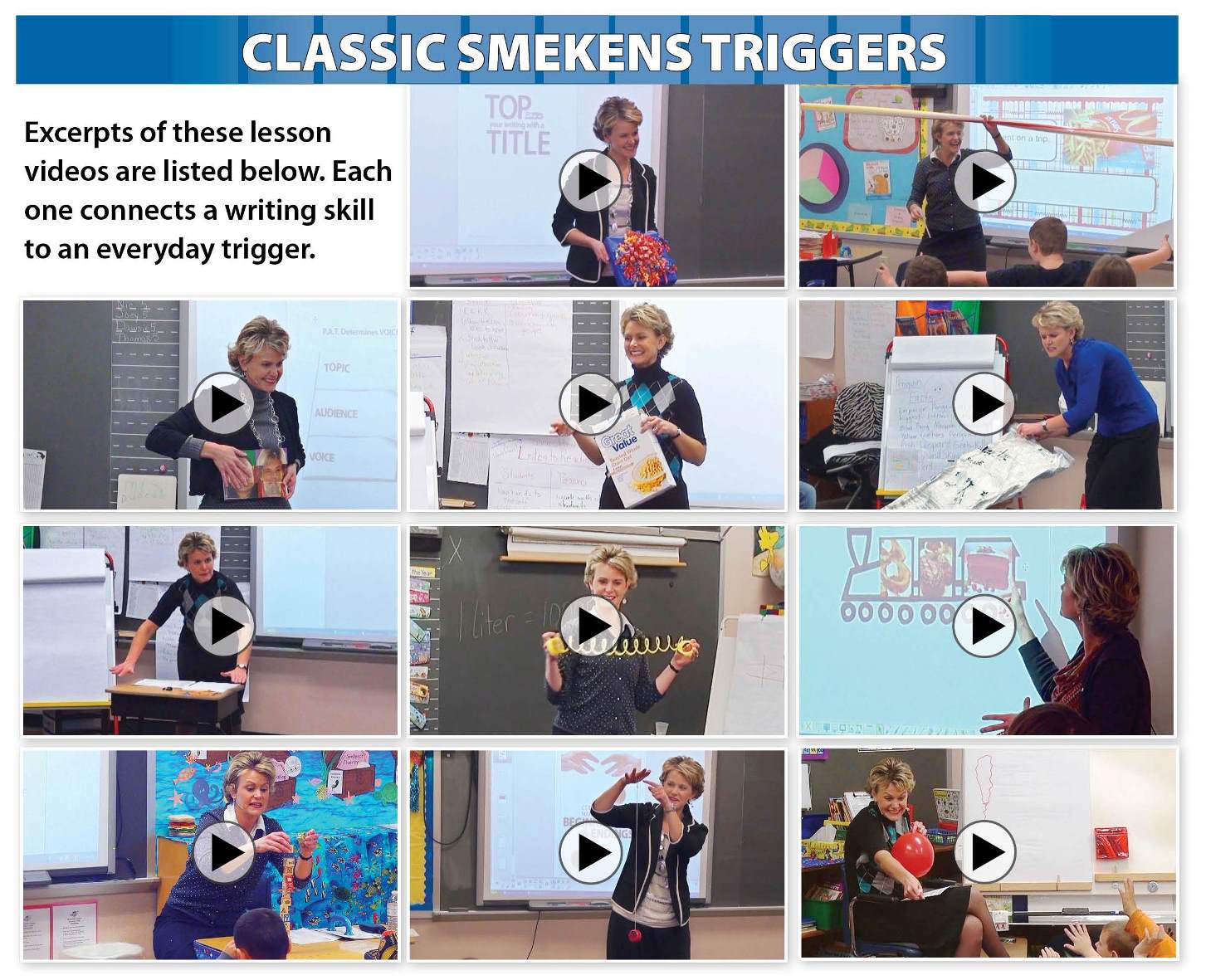
Grade Range
K-2
3-12
K-2
K-5
K-8
K-8
K-12
K-12
3-12
3-12
3-12
3-12
3-12
3-12
6-12
Trigger/Object
Balloon
Balloon
Wooden blocks
Middle train car(s)
Giant magic straw
Yo-Yo
Cheerios box
Bow on a present
Nesting boxes
Space-saver bag
Table
List paper
Flipbook
Slinky
3-Course meal
Writing Skill
Follow a process for developing analogies
Integrate the trigger into the mini-lesson
Tie skill to trigger
Build a chart
Provide a long-term environmental resource that will serve as a physical reminder. Be sure the anchor chart includes:
- The skill written prominently (usually at the top).
- The trigger connection drawn/depicted prominently.
- The purpose or function of the skill clearly written.
- Specific details, examples, tips, or information listed within the chart. (This may be added over several lessons.)
Favorite resources
These 8 resources offer mini-lesson concepts for teaching reading or writing. They all include trigger suggestions and/or anchor chart examples. Any of these would be a great addition to your professional library.

